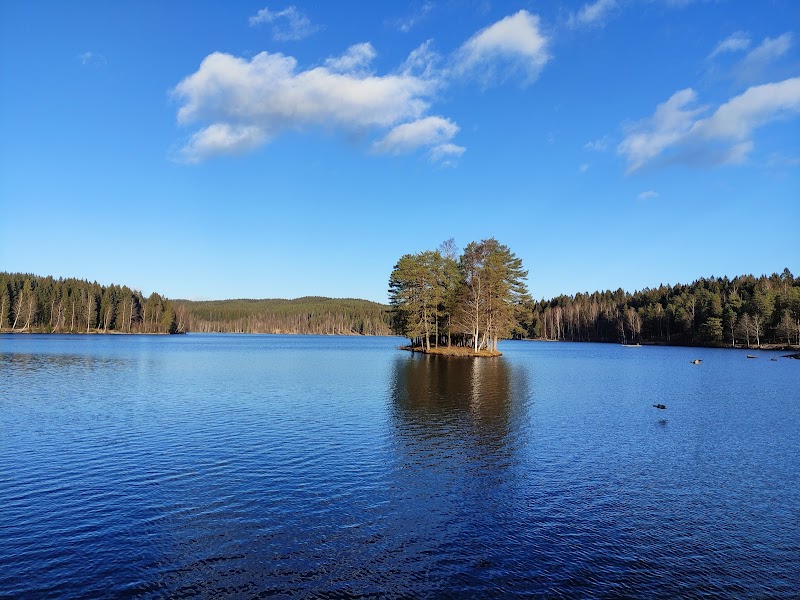
Experience Norway’s premier winter sports event at the Holmenkollen Ski Festival, where historic ski jumps and forest trails come alive with athletic passion and natural beauty. Whether racing down powdery slopes or hiking surrounding paths, visitors can prepare for a thrilling day framed by Oslo’s winter wilderness.
Layer Smartly for Changing Weather
Days can shift between freezing wind and mild sun—layer breathable but warm clothing to stay comfortable throughout your visit.
Wear Waterproof Hiking Boots
Trails around Holmenkollen can be icy or slushy depending on conditions. Choose boots with good tread and waterproofing to maintain grip and warmth.
Carry a Reusable Water Bottle
Cold air masks dehydration; keep sipping throughout your hike to maintain energy and focus.
Use Public Transport from Oslo
Access Holmenkollen easily via metro or bus to avoid parking hassles and enjoy scenic pre-event rides.
Holmenkollen Ski Festival: Oslo’s Legendary Winter Adventure
Set against the crisp, sweeping slopes of Oslo’s Nordmarka forest, the Holmenkollen Ski Festival invites adventurers into a pulse-quickening world where tradition meets challenge. This iconic event turns the infamous Holmenkollen hill into a proving ground for skiers and spectators alike. The terrain is fiercely authentic—rising sharply to 371 meters above sea level with a mix of packed snow trails and steep descents that demand respect and attention.
The festival is more than a race; it’s an invitation to witness winter at its most elemental. From cross-country routes weaving through dense pine stands, to ski jumps that dare gravity itself, each part of the festival engages visitors physically and visually. Traversing the surrounding area offers mixed terrain—from groomed trails suitable for all skill levels to backcountry stretches where the forest dares you closer with whispering branches and frosted pines.
Practical preparation is key. Footwear should be waterproof and offer solid grip—the ground may shift between ice and snow as temperatures fluctuate. Pack layered, breathable clothing to adjust comfortably amid shifting weather. Hydration is essential; crisp air and physical effort combine to dry you out fast. Timing your visit depends on your interests: evenings reveal glowing lights on the hill, while daytime showcases raw nature’s pulse.
The festival also carves a path through history. Holmenkollen is a beacon of Norwegian ski culture, reflecting over a century of winter sports evolution since opening in 1892. It stands fiercely as a reminder that this mountain is not just terrain but a character in itself—testing skill, rewarding effort, and offering spectators a front-row seat to athletic drama.
Navigating to Holmenkollen is straightforward from Oslo’s center by metro or bus, easing your ascent to the event and hikes beyond. Alongside the festival, local trails present chances for extended treks, with elevation gains averaging 200-400 meters depending on route choice.
Whether you’re here to cheer on champions or lace boots for a forest hike, the Holmenkollen Ski Festival blends adrenaline with approachable outdoor rigor. It’s a raw, exhilarating engagement with Norway’s winter, where every slope and whispering tree suggests a challenge well met and an adventure fully lived.
Nearby Trips
All Adventures
Boat Charters
Water Activities
Adventures near Oslo, Norway
Discover the unique and memorable adventures that make Oslo, Norway special.
Frequently Asked Questions
What makes Holmenkollen Ski Festival unique compared to other skiing events?
Holmenkollen is one of the oldest and most prestigious ski festivals worldwide, showcasing a blend of ski jumping, cross-country, and biathlon amid authentic Norwegian surroundings. The historic ski jump tower offers a dramatic stage unlike most modern venues.
Can casual visitors hike around Holmenkollen during the festival?
Yes, many accessible trails surround the venue ranging from easy to moderate difficulty. It’s possible to enjoy winter hikes on groomed paths while soaking in the festival atmosphere.
Are there any lesser-known viewpoints at Holmenkollen?
The southern ridge trail just past the ski jump area reveals broad panoramic views of Oslo and the Oslofjord, often less crowded but rich in winter light reflections.
What local wildlife might you encounter on Holmenkollen trails?
The forest is home to red squirrels, occasional moose, and a variety of birds like the great spotted woodpecker. Winter tracks are often visible in snow, hinting at these hidden residents.
Is the ski jump tower accessible to the public?
Yes, the tower has an adjacent museum and observation deck open year-round, allowing visitors to learn about skiing history and enjoy unrivaled views over Oslo.
What environmental precautions are in place during the festival?
Strict waste management and trail protection policies are enforced. Visitors are encouraged to follow 'leave no trace' principles, especially respecting fragile snow surfaces and forest vegetation.
Recommended Gear
Waterproof Hiking Boots
Keeps feet dry and stable on snow-packed and icy trails during the ski festival season.
Layered Clothing
Allows regulation of body temperature throughout cold winter days and fluctuating exertion levels.
Insulated Water Bottle
Prevents drinking water from freezing in cold conditions to stay hydrated.
Trail Map or Mobile GPS
Helps with navigation of the many routes surrounding Holmenkollen, especially for newcomers.
Local Insights
Hidden Gems
- "The small footbridge over the Ljanselva River just below Holmenkollen offers a tranquil spot rarely crowded during the festival."
- "Heggehullet, a shelter cabin slightly off main trails, provides a rustic resting point with local flavor."
Wildlife
- "Moose often graze near forest edges at dawn and dusk."
- "Winter birds, including the Siberian jay, can be spotted lending sound and movement to the woods."
History
"Holmenkollen dates back to 1892, making it one of the world’s oldest ski jumping arenas. It helped cement skiing as a core Norwegian sport, evolving alongside the country’s winter culture."
